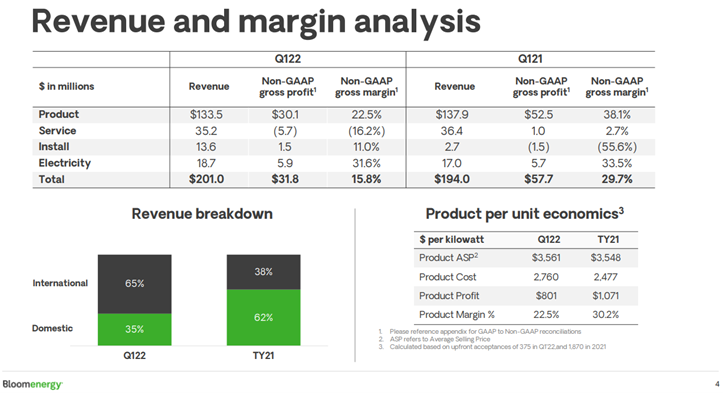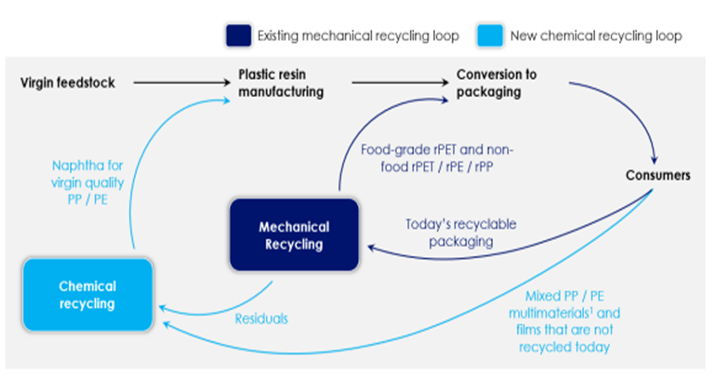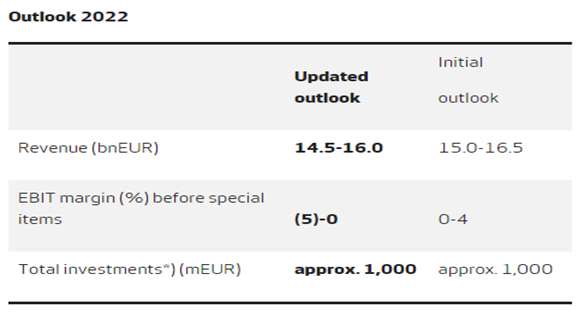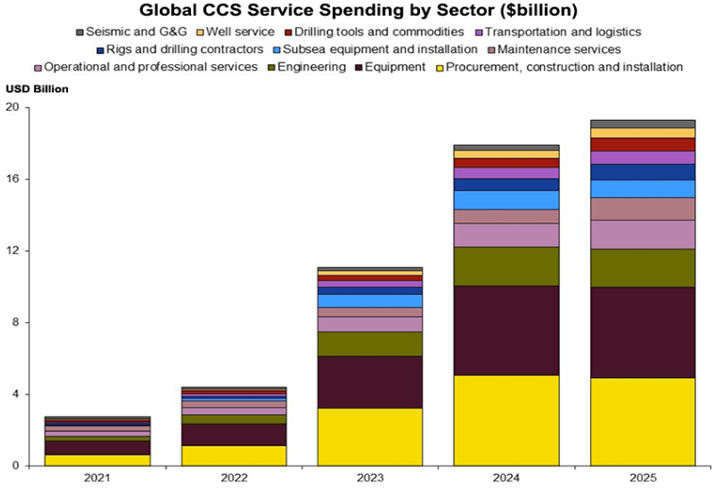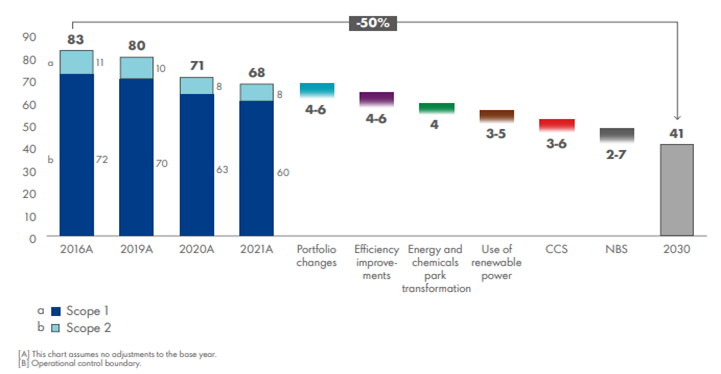Despite all of the rhetoric about the need for green hydrogen, we see most of the large ammonia producers pursuing large blue projects – with Nutrien’s announcement yesterday coming on the heels of a CF new facility announcement and the CO2 capture project announced by LSB a couple of weeks ago. While there are some small (proof of concept) green projects in the works, they are very small, tiny when compared with the ammonia need, whether to replace lost material from Russia and Ukraine or whether to supply what could be substantial needs in Asia to co-fire coal plants, or as a shipping fuel, or as a carrier for hydrogen (see third chart below). The ammonia majors are not waiting around for “green” economics to improve as they see meaningful near-term demand that cannot wait for scale efficiencies of available power on the green side. Large-scale sources of cheap renewable power are hard to find, and where they may exist, there is competition from uses that may be able to pay more.
So Fresh So Clean, Nutrien Looks To Be Going Green
May 19, 2022 2:45:36 PM / by Graham Copley posted in ESG, Hydrogen, Climate Change, Sustainability, Coal, Green Hydrogen, CCS, Blue Hydrogen, CO2, Renewable Power, Ammonia, blue ammonia, electrolysis, CF Industries, fuel, green ammonia, Denbury, Nutrien, LSB Industries
We Need Fossil Fuels For Longer, Especially If We Cant Make Enough Batteries
May 13, 2022 1:32:32 PM / by Graham Copley posted in ESG, Climate Change, Sustainability, Energy, decarbonization, renewables, EV, Lithium, materials, energy costs, fossil fuels, battery, nickel
In the exhibit below, we see another chart that we find unhelpful when looking at the path to net-zero or something close. It is not an either/or game with fossil fuels and renewables. Those promoting this idea are setting impossible goals for the renewable industries, which will keep severe upward pressure on all energy costs. Wood Mackenzie may not mean what is implied in the chart below but taken at face value it suggests that more pressure will be placed on an underfunded materials market to supply an underfunded renewable power market, in which any opportunity to use decarbonized fossil fuels will be frowned upon. It would be good to see an analysis of how much global power could be generated from decarbonized natural gas and how much pressure that would take off the renewable industries.
Tesla And Bloom Driving Renewable Power Demand. CCS Needs To Be Part Of The Answer
May 6, 2022 3:49:31 PM / by Graham Copley posted in ESG, Climate Change, Sustainability, CCS, Renewable Power, EV, energy transition, fuel cells, Bloom Energy, Tesla, electrolyzers, Enbridge
Looking at the Bloom results and reflecting on our many recent client discussions, the low-cost providers of fuel cells and electrolyzers are going to win disproportionately in our view, but whether that is Bloom or others remains to be seen. Lower costs will come with scale, and this should allow the leaders to stay ahead, especially if they control their equipment production as Bloom does. The negative for Bloom is that its equipment production is in the US, which may add costs, but the positive is that it is on-shore and this gives the company more control over delivery in the US. Companies that can scale quickly in this space and other renewable sectors, should see the benefit of economies of scale and this should drive more wins and more economies.
Managing Waste To Maximize Value Requires Multiple Processes
May 4, 2022 2:15:03 PM / by Graham Copley posted in ESG, Recycling, Climate Change, Sustainability, LyondellBasell, chemical recycling, waste, polymer recycling, waste recycling
In the first picture below we see another schematic that shows how different options for polymer recycling could work together. We have suggested a more complex site than the one in the chart as there will be opportunities to recycle some polymers into non-like-for-like applications such as roadbed modification and other durable applications. In addition, there may be a better return in waste to energy versus chemical recycling and that may be an alternative or an add-on. This sort of complex site is what we believe LyondellBasell could be looking at for the Houston refinery site. An integrated waste treatment facility that optimizes that use for each tranche of the waste stream could improve the overall investment returns. In the second picture below we show our version of what a comprehensive waste recycling operation should look like. See more on recycling!
More Woes For Wind
May 3, 2022 1:20:32 PM / by Graham Copley posted in ESG, Hydrogen, Wind Power, Climate Change, Sustainability, CCS, Renewable Power, Inflation, Supply Chain, wind, Westlake, renewable, Vestas, Williams, low carbon power
We discussed the woes of the wind power industry at length in a dedicated ESG and Climate piece last week, and the Vestas results below play into the same theme. The company is cutting guidance again for 2022, which is already much lower than estimates would have suggested 6 months ago. While Siemens Gamesa has the added headache of a mismanaged platform change, all of the issues raised by Vestas are shared industry wide, delayed installations because of supply chain issues and material shortages, as well as significant cost inflation. In tomorrow’s ESG and Climate report we discuss some of the increases in European PPAs in 1Q 2022, reversing a multi-year trend of lower installed costs of power. This reversal will likely impact plans for 2022 and 2023, especially for those banking on lower power costs to justify many of the announced hydrogen ventures – particularly in Europe. Those who press ahead despite higher power costs and higher construction costs in general, may stretch both balance sheets and borrowing capacity.
WACKER Is Recognizing Supply Chain Issues Which Threaten Renewable Power Goals
Apr 28, 2022 2:17:23 PM / by Graham Copley posted in ESG, Hydrogen, Climate Change, Sustainability, CCS, Renewable Power, Supply Chain, Wacker, raw material
Anyone who read our ESG and Climate reports of the last two weeks will know that we do not believe in the hydrogen projections below as we see renewable power as a potentially scarce resource. Furthermore and also covered yesterday, should the API be successful with its carbon tax proposal in the US and should this be additive to the 45Q incentive for CCS, we could see an explosion of blue hydrogen investments in the US, especially on the Gulf Coast.
A Boost For Carbon Capture: More Constrains For Renewable Power
Apr 27, 2022 12:25:06 PM / by Graham Copley posted in ESG, Carbon Capture, Climate Change, Sustainability, Carbon Tax, CCS, Blue Hydrogen, Renewable Power, Chemical Industry, decarbonization, Aemetis, renewable energy, clean energy, SAF, 45Q tax credit, Fulcrum Bioenergy
The CCS spending chart below is quite detailed, but shows the limited amount of spending in 2021 and 2022 and may underestimate the amount of seismic spending needed, especially in the US, as companies prepare permit applications. We do not expect to see much spending in the US before mid-decade beyond permit applications. However, as we discuss in today’s ESG and Climate report, should the API proposed carbon tax, or something similar, be additive to the 45Q tax credit, we could see a step-change in CCS when/if the tax is approved. The tax on its own is likely not enough to drive decarbonizing investment, but when added to 45Q it could be a specific trigger for CCS investment, and we could see a step-change in the second half of the decade. This might involve large-scale blue hydrogen production, especially on the Gulf Coast to decarbonize the refining and chemical industries.
Colgate Palmolive: A Bold Agenda But Markets Will Need To Cooperate
Apr 22, 2022 2:53:48 PM / by Graham Copley posted in ESG, Climate Change, Sustainability, Renewable Power, recycle, water
The Colgate Palmolive sustainability and social impact report is very comprehensive, and we like the comprehensive inclusion of water security towards the end. The challenge for all corporates that set goals like those outlined below will be the elements that they cannot control – something we discussed at length in this week’s ESG and Climate report with a focus on sustainable fuels. We cannot pursue renewable power as fast as we would like without supportive policy around materials investment – Colgate Palmolive will not be able to get to 100% renewable power by 2030 if it is either not available or prohibitively expensive because of competition. The company will also not be able to meet its sustainable materials goals of the sustainable goals that need to come from crops. We do not have a radically different farm policy. The goal to achieve 100% recyclable reusable or compostable plastic packaging by 2025, is very ambitious and has some negative ramifications for the compounders, who will likely lose volume, and positive ramifications for compostable polymers.
Shell Saying All The Right Things, But Likely Not Enough
Apr 20, 2022 2:24:59 PM / by Graham Copley posted in ESG, Carbon Capture, Climate Change, Sustainability, LNG, CCS, CO2, Energy, Shell, fossil fuel, carbon values, energy transition, carbon intensity
Shell issued its 2021 energy transition progress this morning and the report contains a lot of detail about what Shell has done so far and what the company intends to do. The report is a record of progress and intent and is targeting both general stakeholders as well as the Shell board and annual meeting, where approval of the plan will be sought. When compared with other reports we have seen from other companies, this summary is comprehensive. It provides some concrete steps to achieving emission goals in 2030 – exhibit below - while remaining appropriately vague about getting to 2040 and 2050 targets. However, we would note how much portfolio changes likely added to the 2016 to 2021 progress – likely proportionately much more than they are expected to contribute from 2022 to 2030. Both renewable power and CCS figure in the 2030 projections below and Shell will need to get moving on the CCS front of it is to sequester 3-6 million tons of CO2 per annum by 2030. The expectations are likely based on the European offshore projects, as it may take longer than 8 years to get permits and investments in place in the US. The US could move faster but the EPA would likely need to grant primacy to at least Louisiana and Texas for things to speed up and we are not convinced that this will happen soon. Like many of the other company 2030 plans that we have seen, it is likely that much of Shell’s progress will come in the last couple of years of the decade – especially on CCS.
Demand And Infrastructure For SAF Is Likely Well Ahead Of Supply
Apr 19, 2022 1:34:16 PM / by Graham Copley posted in ESG, Climate Change, Sustainability, IEA, renewable energy, EVs, materials, sustainable aviation fuel, renewable fuels, fuel, material shortages, carbon intensity, battery, nickel, SAF, airlines
In our ESG and Climate report tomorrow, we will focus on SAF from a carbon intensity perspective. The Colonial pipeline initiative was inevitable given the demand for jet fuel at the East Coast airports. Still, we would not expect much volume to move in the near term for several reasons. First, there is not that much to move, and second, California can still pay more because of the LCFS credit. The Biden administration is planning to introduce a broad SAF credit which would help encourage use outside California, but this would also need to stimulate production as the volumes are still small and much smaller than the airlines would want – even the projection of volumes by bodies like the IEA fall well short of potential airline demand by 2030 and 2040. This is an investable theme, in our view, and we will discuss it in more detail tomorrow.




